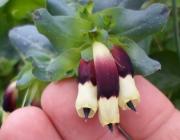Citation:
Date Published:
oct 2019Abstract:
Astragalus armatus Willd. subsp. armatus is an endemic shrub of the Northern Africa. Its cultivation and domestication are very limited because of difficulty with seed germination and establishment. In this study, we investigated some plant morphological characteristics in real time and in situ (leaves, fruit and seeds) of different ecotypes of A. armatus, collected from two sites in Algeria (Arid Steppe of Aïn Naga and Condorcet Moutain), which elevation and climate data are very different. Moreover, the role played by the seed coat in seed dormancy of these two different populations was tested by the effects of the pretreatment and its duration on the performance of seed germination, by considering the final germination percentage (FGP) and the mean germination time (MGT). These parameters are estimated for 10 days in Petri dishes and stored in darkness at (25°C). Pre-sowing treatments included immersion in concentrated sulphuric acid for 30, 60 and 90 min, and immersion in hot water (100°C) for 10 min. Statistical analysis showed that the treatment and the ecotypes effects on both FGP and MGT were highly significant (P< 0.0001). Untreated seeds of both ecotypes of A. armatus failed to germinate (except for a few of Condorcet Mountain ecotypes). For both populations, the most effective treatment was immersion in sulphuric acid for 60 minutes for the ecotype of Arid Steppe of Aïn Naga, and only 30 min for Condorcet Mountain. An excellent germinative strength is characterized by a higher FGP and a reduced MGT. The morphological characteristic and seed germination could be attributed to intraspecific variations resulting from the natural selection of the same species.
